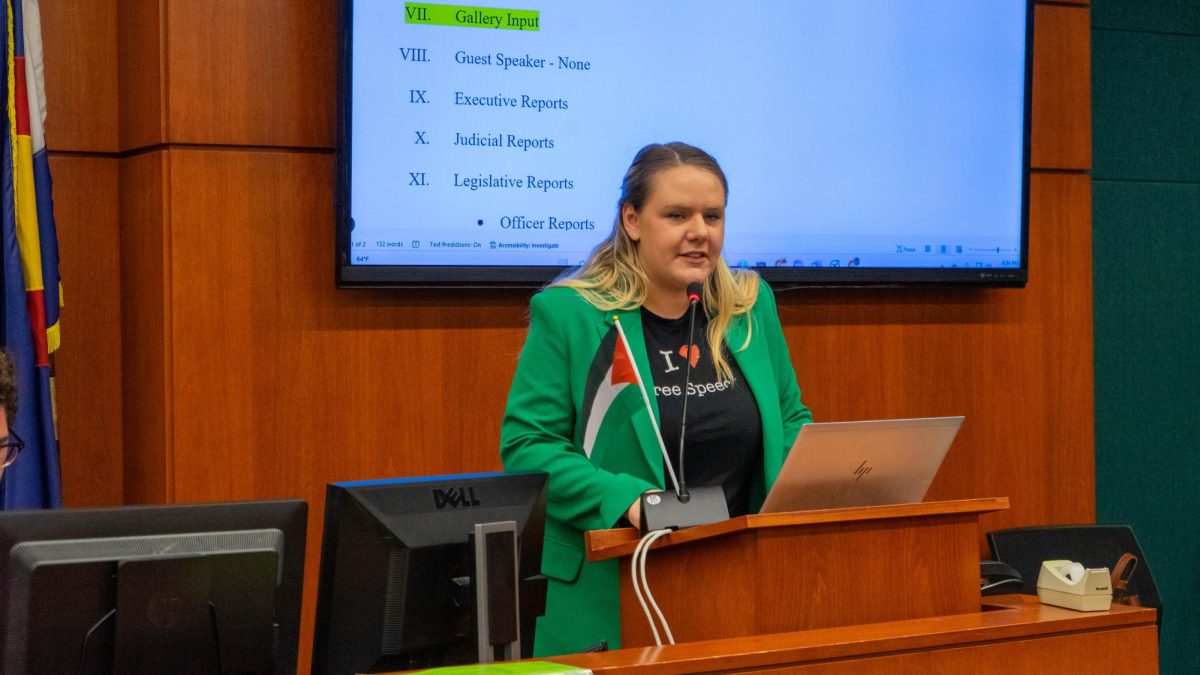Editor’s Note: This is the final article within a five-part series regarding NTTF at Colorado State University, going into a week in which NTTF will be heavily discussed. See Part 2: The question of compensation | Part 3: Fortifying faculty appointment types | Part 4: Opening paths for promotion | Part 5: The Future of Faculty
A protest, a petition and a new president — Colorado State University students got a pointed look into the working world of their professors last spring when faculty took on a surge of public activity to advocate for higher wages and full rights for non-tenure track faculty.
That advocacy will continue next week during the annual Campus Equity Week, Oct. 21-25, with events meant to spotlight issues of faculty inequity and potential solutions.
After an NTTF-backed petition called “Fair Pay for Faculty at Colorado State University” garnered over 12,000 signatures in April and a faculty protest in May, the CSU Provost’s Office implemented or began implementing new changes to NTTF positions. These changes included increasing base salaries and opening paths for promotions. Some NTTF faculty went years without a promotion option.
The following changes are the culmination of years of deliberation and delays for many faculty.
The work is far from done though, as the University continues to assess how to process NTTF promotions, and faculty continues to assert priorities for new University President Joyce McConnell.
With many of the April petition signers identifying themselves as students or alumni, there is also a recognition among students of the relevance of having professors who can afford rent.
But to really appreciate the significance of CSU’s years-long struggle to reach this point, it’s necessary to review the complex details that have long plagued NTTF appointments.
What does NTTF mean?
Commonly generalized with “adjuncts” in the mainstream conversation, NTTF is the term for “contingent faculty positions” at CSU.
CFPs go by different names at different institutions, but they always refer to faculty who are appointed off the tenure track, according to the American Association of University Professors.
At CSU, Dan Bush, vice provost for faculty, said the main difference between being on or off the tenure track is that TTF are expected to teach and do research, while NTTF are expected to do only one of the two — and most are hired to teach.
In fact, NTTF taught 43% of undergraduate student credit hours while making up 32.4% of the total employee force (and 41% of the faculty force) in 2018-2019, according to data provided by Bush and the University.
In the previous school year, out of 64,200 total student credit hours, the number taught by faculty breaks down as such:
- NTTF: 48%
- TTF: 34%
- Graduate students: 10%
- Other: 8%

These numbers fluctuate somewhat, but typically, NTTF teach slightly over 40% of the hours, and TTF teach slightly under 40%. The remaining 20% is taught by other employees such as graduate students and various administrators, Bush wrote in an email to The Collegian.

According to data provided by Jenny Morse, chair for the Committee for NTTF, CSU employed 775 NTTF, 69% of which were full-time employees, and 1,109 TTF, 98% of which were full-time, out of a total 1,884 faculty in the 2018-19 school year.
Ultimately, what means is non-tenure-line faculty teach more classes with fewer faculty.

Such an arrangement is beneficial because NTTF tend to teach the larger undergraduate courses, which frees TTF to do their research roles, said Stephen Mumme, political science professor.
“For those of us who are involved in more research work or scholarship in addition to teaching, we really depend on our colleagues who are teaching basic courses to enable us to better accommodate these other things,” Mumme said while participating in the May protest.
However, CSU has not been treating NTTF as the vital employees they are, Mumme said.
NTTF’s large class workload, paired with other elements like lack of job security, shared governance and adequate compensation, have shaped their role into one of exhaustion and frustration, according to various NTTF.
(The University) saying, … ‘We know you’re not paid enough, and we know that you’re not treated very well, and we know that you’re overworked, and we can’t solve any of those problems,’ — (is) becoming really agonizing for non-tenure track faculty.” – Jenny Morse, chair of CoNTTF and NTTF in the College of Business
Changes meant to ameliorate the issues have been slow to come and still slower to implement, Morse said.
“(The University) saying, … ‘We know you’re not paid enough, and we know that you’re not treated very well, and we know that you’re overworked, and we can’t solve any of those problems,’ — (is) becoming really agonizing for non-tenure track faculty,” Morse said.
The situation has been detrimental to students too, Morse said. Faculty getting burned out or leaving means there is less support for students inside and outside the classroom, whether it’s having a tired teacher or not being able to find a previous professor for a recommendation letter because they left CSU.
Nationwide, the AAUP has found that tenure line appointments have fallen steeply, while contingency appointments have increased at higher education institutions. They now make up the majority of faculty appointments.
Yet, in spite of pivoting to NTTF for teaching roles, many institutions “in the early phases … didn’t always incorporate them fairly as another class of employee,” Bush said.
They lacked job security or promotional pathways, all because their institutions didn’t make any long-term commitments to keeping them.
In the last five years, however, institutions started realizing NTTF contributions are just as important as any other employee, Bush said. And that includes CSU, where a list of new benefits and structural changes were unveiled for NTTF — albeit with some inevitable “bumps and curves” in its implementation.
Correction: This article has been updated to reflect more accurate information regarding the makeup of NTTF and TTF.
Samantha Ye can be reached at news@collegian.com or on Twitter @samxye4.









